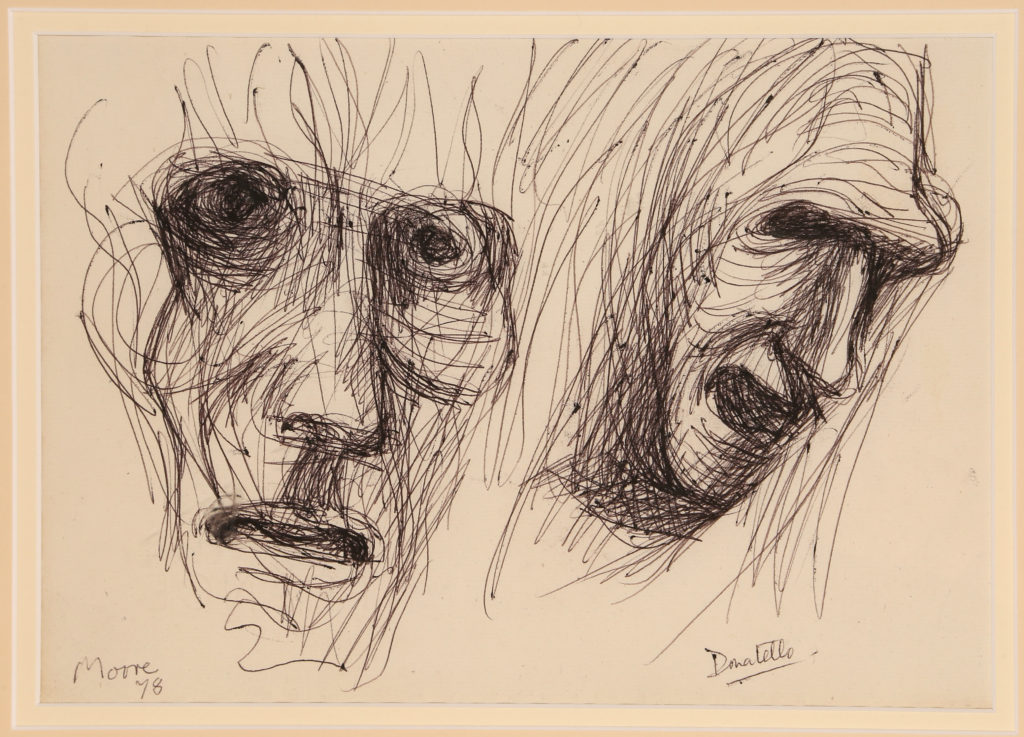Henry Moore, Donatello and the Language of Sculpture
15/01/2018 Chiswick Curates, 20th Century
Henry Moore’s enduring influence on 20th century sculpture is undisputed. Known for his monumental reclining figures and powerful use of negative space, Moore’s work helped define British modernism on the international stage. While his sculpture is widely celebrated, his drawings offer a more intimate perspective into the development of his visual language.

Henry Moore, 1898-1986, 'Donatello', 1978, pen black ink, titled, signed
and dated front, (19 x 27cm). Estimate: £7000 - £9000.
From Yorkshire to International Acclaim
Born in 1898 in Castleford, Yorkshire, Henry Moore was the seventh child of a coal miner. Although initially expected to train as a teacher, Moore’s ambitions shifted following his service in the First World War. He pursued art at Leeds School of Art and later the Royal College of Art in London, where he encountered works from ancient civilisations and non-European cultures. These collections would become a profound influence throughout his life.
While in London, Moore met fellow student Barbara Hepworth, beginning a lifelong exchange between two of Britain’s most pioneering sculptors. Moore’s fascination with the human figure, nature, and the interplay of mass and space would come to define his output over the decades to follow.
"Even when I was a student I was totally preoccupied by sculpture in its full spatial richness."– Henry Moore, 1955
A Radical Carver, A National Voice
Although sculpture remained his primary medium, Moore was also a prolific draughtsman. His drawings were never merely preparatory. Instead, they reflected an extension of his thinking about form, surface, and movement. These works on paper have long been admired for their immediacy and conceptual clarity.
One such drawing, titled Donatello (1978), exemplifies Moore’s lifelong engagement with classical art and his admiration for the Italian Renaissance. Executed in pen and ink, the drawing reveals Moore’s ability to evoke sculptural weight and tension through linear means. It is a study not only of form, but of homage, a conversation across centuries between two great artists.
Moore’s commitment to direct carving and truth to materials placed him at the centre of British sculpture during the interwar years. Influenced by the likes of Brancusi and Epstein, Moore developed a distinctive humanist voice that resonated widely in the post-war period. His public commissions for institutions including UNESCO, the Lincoln Center and Parliament Square in London further cemented his legacy as one of Britain’s most celebrated sculptors.
Collectors continue to seek out both Moore’s sculptures and his drawings, which offer insight into his working process and personal reflections. Whether cast in bronze or drawn on paper, Moore’s work remains a touchstone in the story of modern art.
Now Inviting Entries: 20th Century Art and Design
Do you own a work by Henry Moore or another 20th century British artist? We are currently welcoming consignments of sculpture, drawings, prints and design objects for upcoming auctions.
To discuss a work or request a free valuation, contact our team at
pictures@chiswickauctions.co.uk or submit an Online Valuation.
We welcome single works or complete collections.